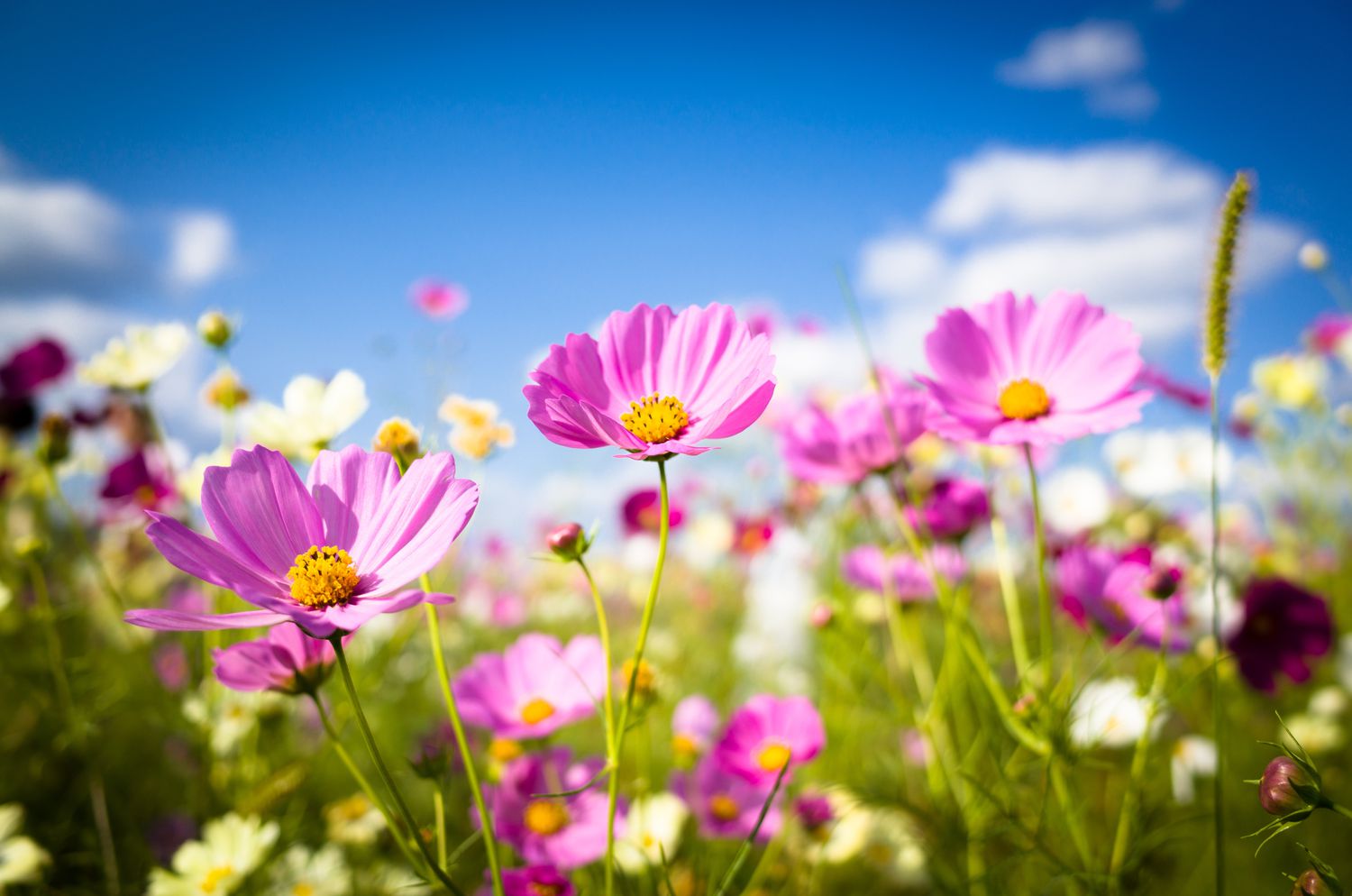
These Are the Easiest Flowers for Beginners to Grow, According to Gardeners
If you’re starting a garden for the first time, or just picking new plants for the season, it can overwhelming to sift through all the different options of flowers. But you can simplify your selection by picking flowers that grow easily and produce gorgeous results without all the extra effort.
Whether you’re a beginner gardener or just want to make the gardening process easier, our experts say these are the easiest flowers to grow.
Marigolds
Getty Images
Marigolds are one of the easiest flowers to grow for beginners because they typically require little maintenance once established. Jane Dobbs, an expert gardener and gardening team lead at Allan’s Gardeners says that marigolds are heat-tolerant, pest-resistant, and they bloom until frost.
She advises planting them in an area with full sun and well-draining soil. “They do not require a lot of watering; just allow the soil to dry between waterings,” she advises. Marigolds are also self-seeding flowers, which means they drop seeds that can produce new plants the following year. Plus, they have beautiful bright blooms in a variety of colors, such as yellow, orange, red, gold, and white.
Botanical Name: Tagetes
USDA Zones: 2-11
Sun Exposure: Full
Coneflowers
Getty Images
Coneflowers can be one of the easiest flowers to grow and they attract pollinators to your garden. Chuck Pavlich, gardening expert and director of new product development with Terra Nova Nurseries, recommends the Echinacea ‘Giddy Pink’ variety if you’re looking for a gorgeous addition to your garden or an easy flower to grow in a container. “This particular coneflower has bright pink double flowers that contrast beautifully against the pine-green foliage,” he says.
You can find coneflowers in other color varieties, too, such as purple, orange, red, white, and yellow. They are also perennials and can even self-seed and spread, so they’re a perfect pick for gardeners who want a flower that returns year after year.
Botanical Name: Echinacea
USDA Zones: 4-9
Sun Exposure: Full (Can tolerate partial shade)
Zinnias
Getty Images
There are over 20 species of zinnias to choose from, and they come in different shapes, sizes, and colors. Dobbs says zinnias are vibrant, drought-tolerant, and bloom all summer. “Unlike most other plants, they grow quickly from seed and attract pollinators such as bees and butterflies,” she informs.
“They need well-drained, average soil and a lot of sun,” she adds. “Don’t water them unless the topsoil is dry.” Although zinnias are annuals, they can reseed themselves and grow new flowers the following year. You can also collect the seeds to ensure you have some to plant in your garden or containers the next season.
Botanical Name: Zinnia elegans
USDA Zones: 2-11
Sun Exposure: Full
Cosmos
Getty Images
Cosmos are among the easiest flowers to grow from seed and they are fast growing so you will have beautiful blooms in no time. Dobbs says they’re a drought-tolerant flower that blooms throughout the summer with different colors. They have a daisy-like appearance with pretty playful petals that come in colors such as yellow, red, pink, white, and orange.
They can also flourish in poor to moderately fertile soil conditions as long as it is well-drained. Since cosmos are drought-tolerant plants they also require less watering.
Botanical Name: Cosmos bipinnatus and Cosmos sulphureus
USDA Zones: 2-11
Sun Exposure: Full
Hyssops
Getty Images
Hyssops, also known as hummingbird mint or Agastache, is beloved by bees, butterflies, and hummingbirds. It features fragrant flowers in colors of blue, purple, red, pink, orange, and white, and the foliage can vary from deep green to gold.
Pavlich says that the Agastache Pink Pearl variety is a staff and visitor favorite for its incredibly unique large mounds of light-pink flower spikes. “Its large, dense blooms make this variety an eye-catching addition to garden borders as well as containers,” he says.
Hyssops are drought-tolerant and deer-resistant, and once established, they bloom from spring through frost. This perennial plant is also relatively easy to grow from seeds and requires minimal care once it’s established.
Botanical Name: Agastache
USDA Zones: 6-10
Sun Exposure: Full
Sunflowers
Getty Images
You can bring some sunshine to your garden by growing gorgeous sunflowers. Dobbs says they’re one of the easiest flowers to grow from seed and are a great choice for children and beginners. Sunflowers come in all sorts of shapes, sizes, and colors. You can find dwarf varieties that only grow between 1 and 2 feet tall or ones that can grow up to 15 feet tall.
“Sun is a must, and you need to water them deeply but infrequently,” Dobbs says. She also recommends staking taller varieties to prevent bending.
Sunflowers can be annuals or perennials, depending on the type you get.
Botanical Name: Helianthus annuus
USDA Zones: 2-11
Sun Exposure: Full
Nasturtiums
Getty Images
If your goal is to grow an edible garden, the nasturtium flower is for you. Dobbs says it’s a low-maintenance edible flower that thrives in poor soil and adds vibrant color to gardens.
According to The Almanac, nasturtiums are known to have a peppery mustard-like taste, and the “seed pods can be pickled and used like capers.” These festive flowers are available in shades of pink, red, yellow, white, and orange that will provide a bright pop of color to your garden. Dobbs states that it can tolerate partial shade and requires moderate watering.
Botanical Name: Tropaeolum spp.
USDA Zones: 9-11
Sun Exposure: Full
Mums
Getty Images
Mums are known for their bold, beautiful blooms, which come in various colors, such as yellow, orange, purple, burgundy, and white. Once established, they’re one of the easiest flowers to grow, and some species have long bloom times from late July through the fall season.
They can be annuals or perennials, depending on which type you get. Garden mums are typically perennials, while florist mums are grown as annuals. Although garden mums can be cold-hardy, they still need to be protected from frigid temperatures during the winter season. You need to provide deep watering when caring for outdoor mums because they require direct sunlight.
Botanical Name: Chrysanthemums
USDA Zones: 5-9
Sun Exposure: Full










